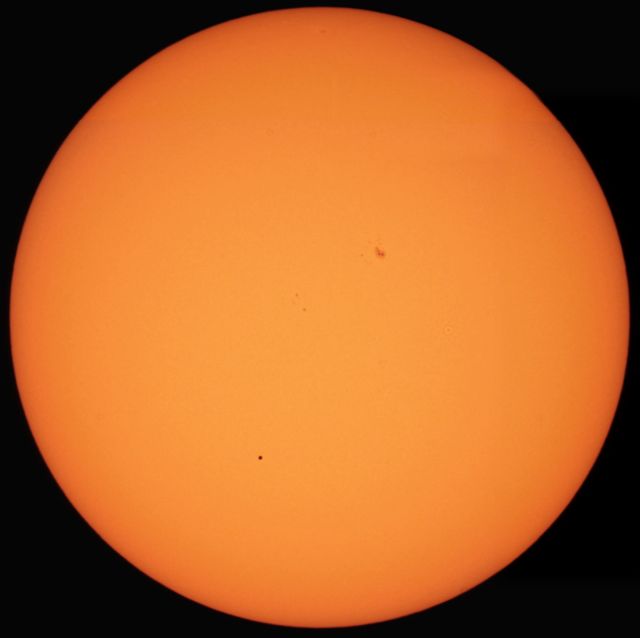

Transits of Mercury can only occur in May and November and the ones in May are generally easier to observe in the UK. The two recorded here are the only two to occur in May since I started imaging, and there will be no more until 7 May 2049. There will, meanwhile, be three more transits, on 11 November 2019, 13 November 2032, and 7 November 2039, all visible from the UK.
The transit started at 05:13 UT and finished at 10:31.
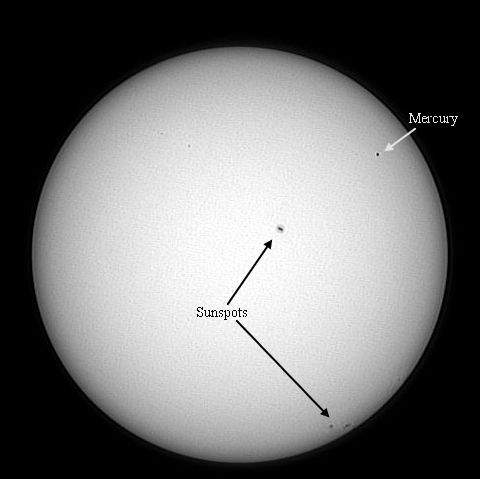 |
This picture of the whole Sun was taken at 09:16 using a 270mm SLR lens and a ToUcam. | ||
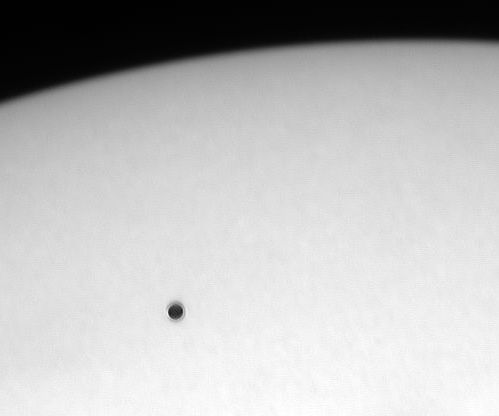 |
This close picture of Mercury passing across the face of the Sun was taken at 06:24 UT. The slight halo around the black image is not an atmosphere (Mercury has none) but is caused by the poor seeing at that time in the morning (the altitude of Mercury was only 17 degrees). The image was taken at prime focus of my ETX125. |
||
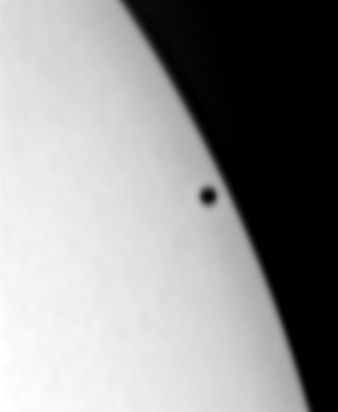 |
This image was taken at 10:25 UT, just before the end of the transit, with a ToUcam at prime focus of my ETX125. | ||
Unfortunately we were on a wild-life holiday in the Outer Hebrides (Scotland) when this transit occurred. I was able to take my ETX125 and a Lumix FZ72 bridge camera, both mounted on photographic tripods. We were fortunate enough to have completely clear skies but I was limited as to when I could take pictures as I wanted to join in the wild-life watching too. So these pictures were taken under less-than-ideal conditions from various locations around North and South Uist. The photographic tripods were less than adequate for the rather heavy ETX125 (which had lost its fork mount some years before) or indeed the Lumix camera at full zoom (×60) and the air was by no means still. However I did manage to drag some presentable pictures from the many I took.
The ETX125 was protected by my 1000-island glass filter and fitted with my Canon 1100D camera at prime focus. The lumix was protected by Baader solar film fixed to a lens hood.
All these pictures have been reduced to 19% of their original size in order to fit on the page.
The transit began at 11:12 UT and finished at 18:42. At the time Mercury subtended an angle of 12 arc-sec.
Firstly pictures taken with the Lumix camera. The time each was taken is indicated in each picture. Move your mouse over the first image to see the spots identified. The original pictures are of varying quality and I have processed these to make Mercury as visible as possible. Hence the rather variable nature of these pictures. My camera was on an alt-az mount so the image of the Sun rotates from one picture to the next. The path of Mercury was straight, not curved as appears in these frames.
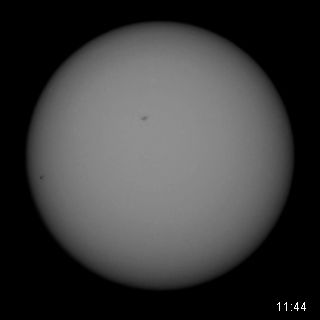 |
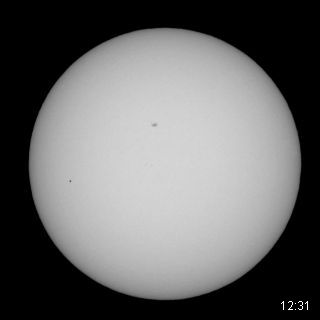 |
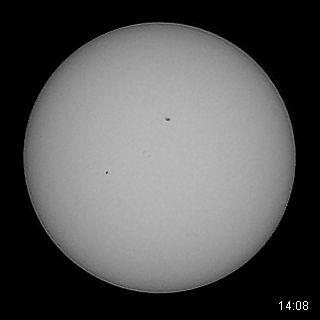 |
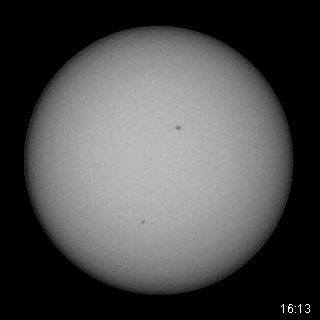 |
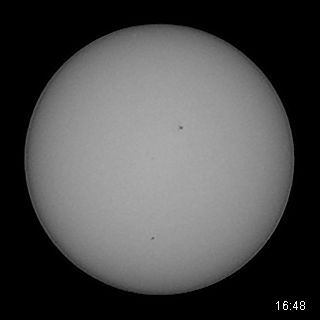 |
And now one taken through my ETX125. The image of the Sun was a little too big to fit on the sensor in the Canon camera, so I have added the missing parts from other images. I had difficulties hiding the joins but the sunspots and Mercury are on the same frame. There is a second faint group of sunspots between the main group (number 12542) and Mercury. This group was numbered 12543.
